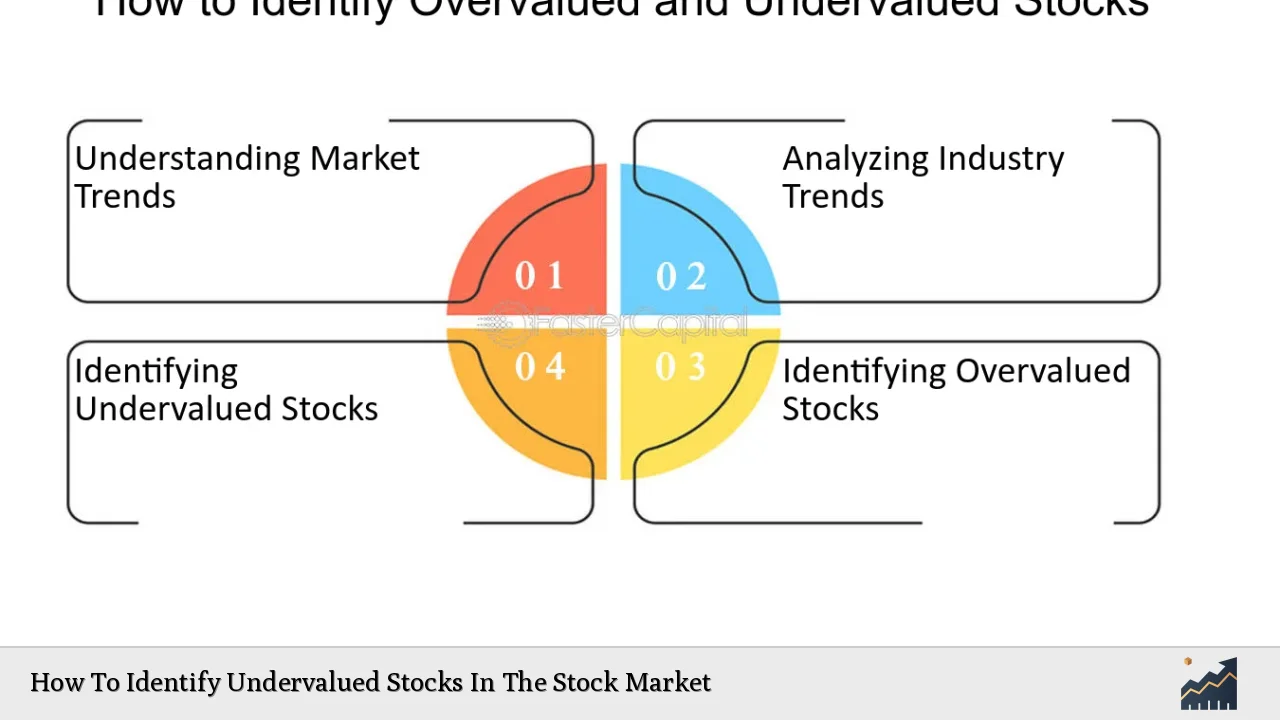Identifying undervalued stocks is a critical skill for investors seeking to maximize returns while minimizing risks. An undervalued stock is one whose market price is lower than its intrinsic value, presenting a potential buying opportunity. This discrepancy can arise from various factors, including market sentiment, economic conditions, or company-specific issues. Understanding how to identify these stocks involves analyzing financial metrics, market trends, and broader economic indicators.
| Key Concept | Description/Impact |
|---|---|
| Intrinsic Value | The perceived or calculated value of a stock based on fundamental analysis, often determined through discounted cash flow models. |
| Valuation Ratios | Metrics such as P/E, P/B, and PEG ratios that help assess whether a stock is overvalued or undervalued compared to its peers. |
| Market Sentiment | The overall attitude of investors toward a particular stock or the stock market as a whole, which can lead to mispricing. |
| Insider Trading Activity | Monitoring purchases by company insiders can indicate their confidence in the stock’s future performance. |
| Sector Analysis | Understanding which sectors are currently undervalued relative to historical averages can guide investment decisions. |
| Economic Indicators | Macro-economic factors such as GDP growth rates, unemployment rates, and inflation that affect market conditions and stock valuations. |
Market Analysis and Trends
To effectively identify undervalued stocks, it’s essential to analyze current market trends and economic indicators. As of late 2024, the U.S. stock market has shown signs of recovery post-pandemic, with the S&P 500 gaining approximately 24.33% year-to-date. However, analysts predict that certain sectors remain undervalued due to lingering economic uncertainties stemming from geopolitical tensions and inflationary pressures.
Key Market Trends
- Sector Performance: Value stocks have outperformed growth stocks in recent months. Sectors like real estate and basic materials are currently trading below their historical averages.
- Interest Rates: The Federal Reserve’s interest rate policies significantly impact stock valuations. Rising rates can lead to increased borrowing costs for companies, potentially impacting their earnings.
- Inflation: Persistent inflation affects consumer spending and corporate margins. Stocks in defensive sectors (e.g., utilities and consumer staples) often perform better during inflationary periods.
Implementation Strategies
Investors can employ various strategies to identify undervalued stocks effectively:
- Fundamental Analysis: This involves examining financial statements and key performance indicators (KPIs) such as revenue growth, profit margins, and return on equity (ROE).
- Valuation Ratios: Key ratios include:
- Price-to-Earnings (P/E) Ratio: A lower P/E compared to industry peers may indicate undervaluation.
- Price-to-Book (P/B) Ratio: A P/B ratio below 1 suggests that the stock may be undervalued relative to its assets.
- PEG Ratio: This ratio accounts for growth rates; a PEG below 1 can signal an undervalued growth stock.
- Screening Tools: Utilize financial screening tools that filter stocks based on specific criteria such as low P/E ratios or high dividend yields.
- Technical Analysis: Analyze price movements and trading volumes to identify patterns that may suggest a stock is undervalued.
Risk Considerations
Investing in undervalued stocks carries inherent risks:
- Market Risk: Stocks may remain undervalued for extended periods due to broader market conditions.
- Company-Specific Risks: Undervaluation may stem from poor management decisions or declining industry prospects.
- Liquidity Risk: Some undervalued stocks may have low trading volumes, making it difficult to enter or exit positions without affecting the price.
- Valuation Risk: Misjudging a company’s intrinsic value can lead to poor investment decisions.
Regulatory Aspects
Understanding regulatory frameworks is crucial for investors:
- SEC Regulations: The Securities and Exchange Commission (SEC) mandates transparency in financial reporting. Investors should review 10-K reports and other filings for accurate company data.
- Insider Trading Laws: Monitoring insider transactions is legal but requires careful consideration of the implications of such trades on stock valuations.
Future Outlook
The future outlook for identifying undervalued stocks remains promising amidst ongoing economic fluctuations:
- Analysts predict that as inflation stabilizes and interest rates normalize, more opportunities will arise in sectors currently considered undervalued.
- The shift toward sustainable investments may create new valuation paradigms as companies pivot towards greener practices.
- Technological advancements will continue to impact industries differently; thus, staying informed about sector-specific trends is vital for identifying potential bargains.
Frequently Asked Questions About How To Identify Undervalued Stocks In The Stock Market
- What defines an undervalued stock?
An undervalued stock trades below its intrinsic value based on fundamental analysis, often indicated by low valuation ratios compared to industry peers. - How can I find undervalued stocks?
You can find them by analyzing financial ratios like P/E and P/B ratios, monitoring insider trading activity, and using financial screening tools. - What are the risks of investing in undervalued stocks?
The main risks include market risk, company-specific risks, liquidity risk, and valuation risk. - Is it better to invest in growth or value stocks?
This depends on your investment strategy; value stocks offer potential bargains while growth stocks may provide higher returns during bull markets. - How do economic indicators affect stock valuations?
Eeconomic indicators like GDP growth rates and inflation influence investor sentiment and corporate earnings forecasts, impacting stock valuations. - What role does insider trading play in identifying undervalued stocks?
Insider buying can indicate confidence in a company’s future performance, suggesting the stock may be undervalued. - Can technical analysis help in finding undervalued stocks?
Yes, technical analysis can provide insights into price movements that may indicate potential buying opportunities for undervalued stocks. - How often should I reassess my investments in undervalued stocks?
You should regularly reassess your investments based on changes in company fundamentals and market conditions.
This comprehensive approach combines various analytical methods with current market insights to equip investors with the knowledge needed to identify undervalued stocks effectively. By leveraging fundamental analysis alongside an understanding of macroeconomic trends, investors can position themselves to capitalize on potential opportunities in the stock market.

